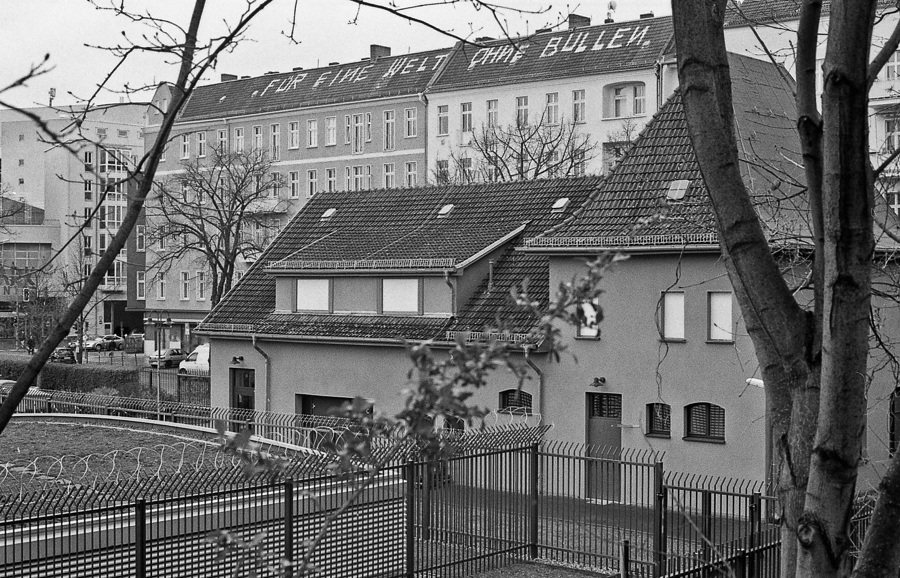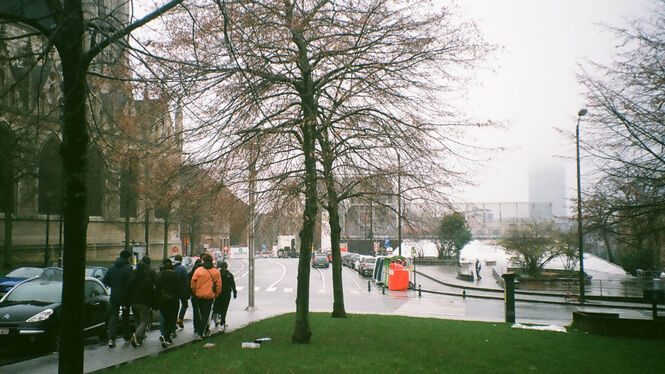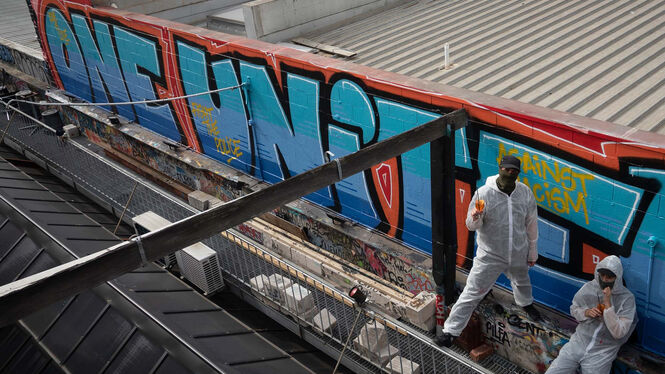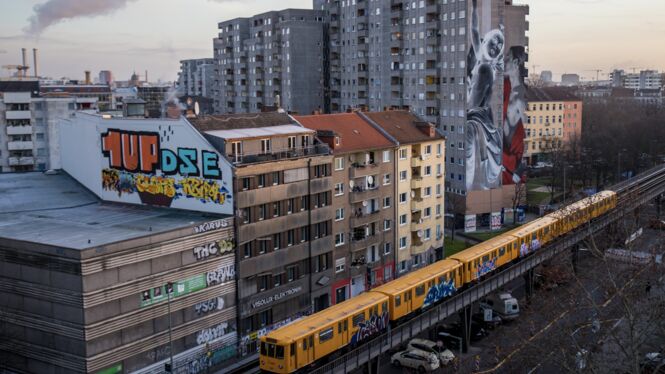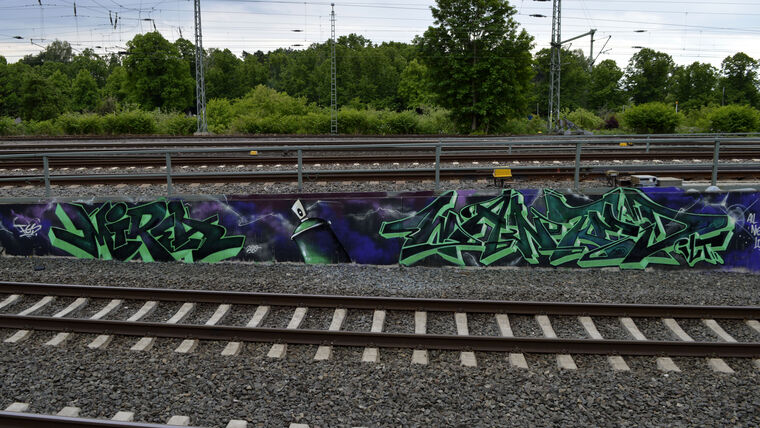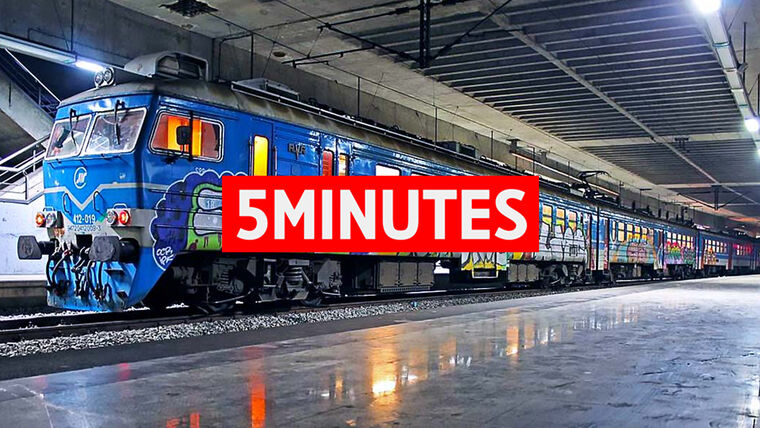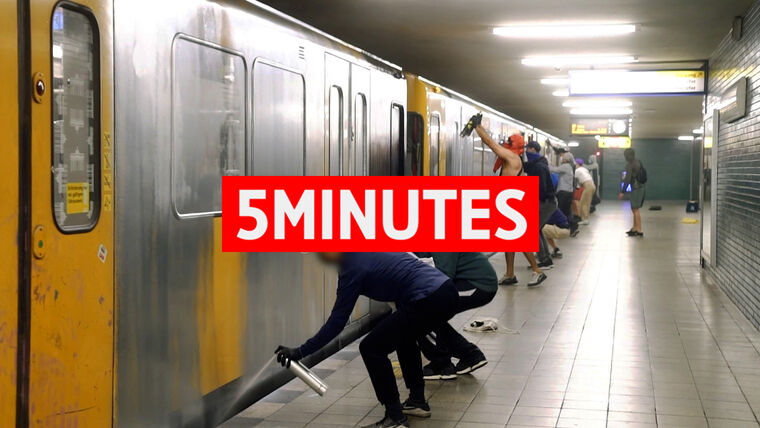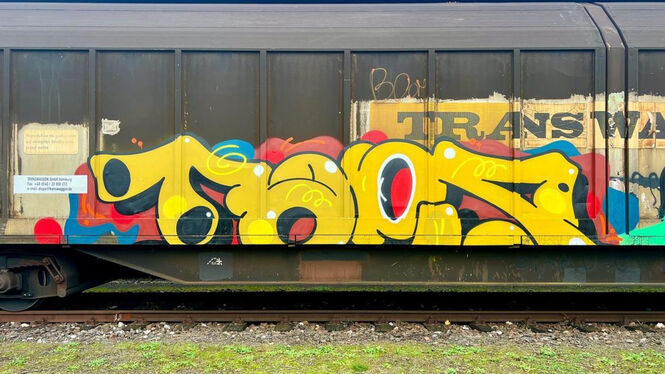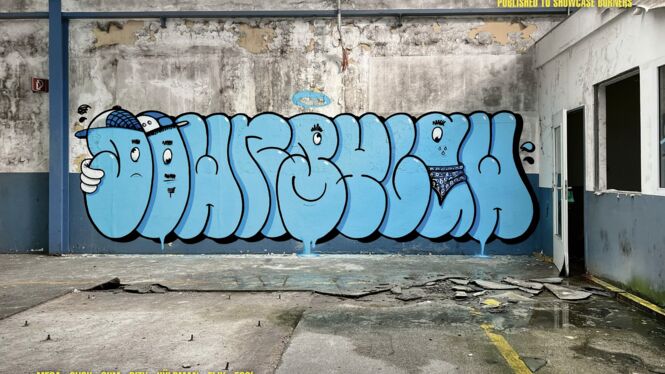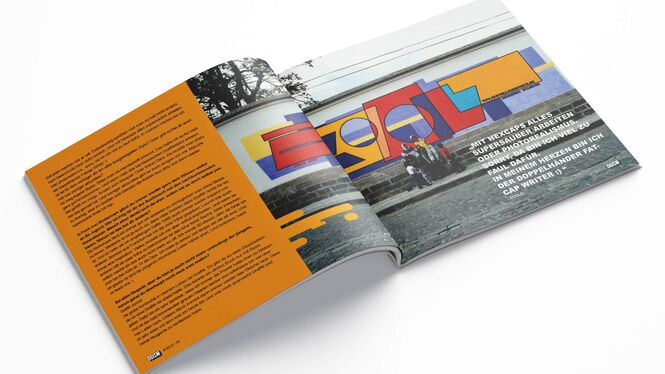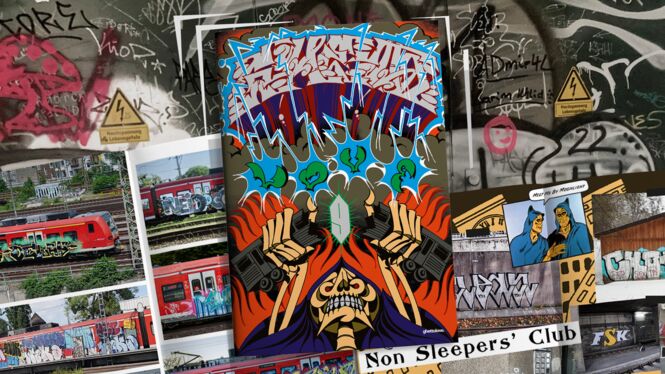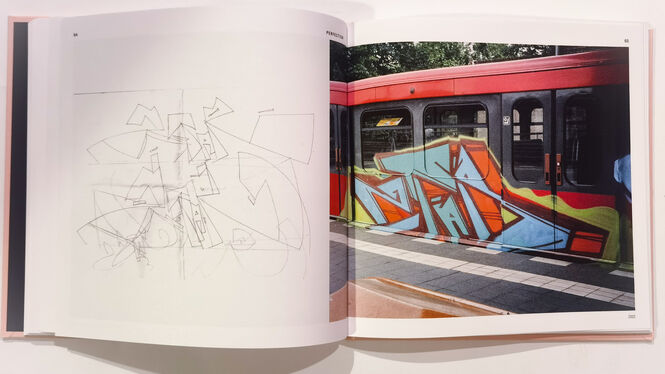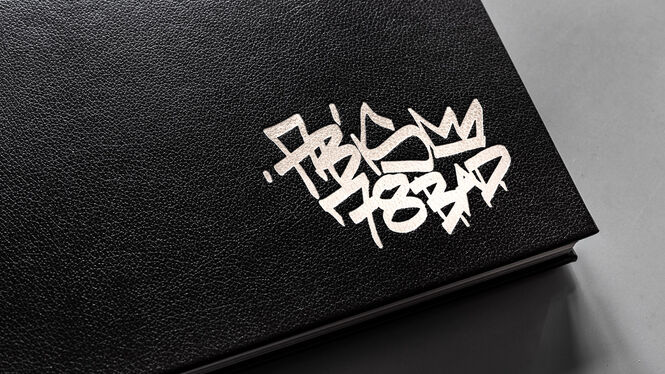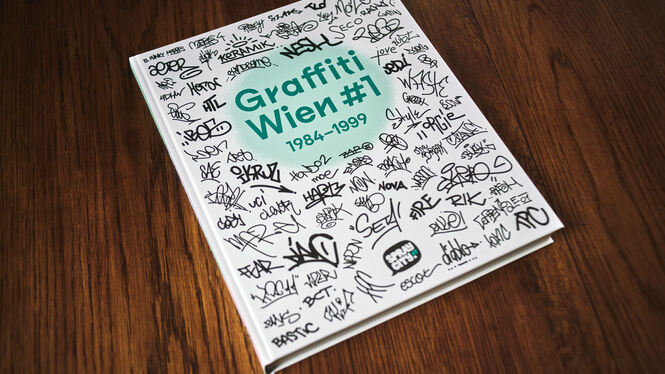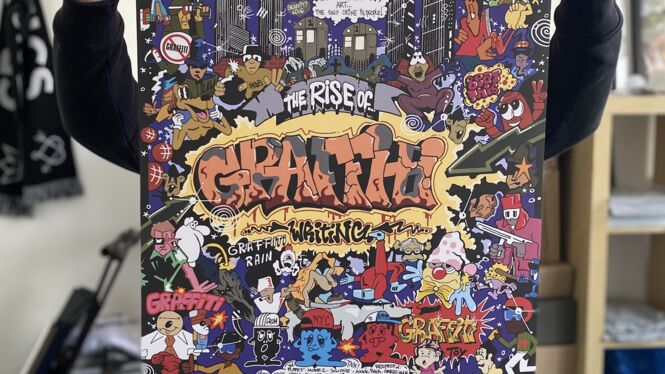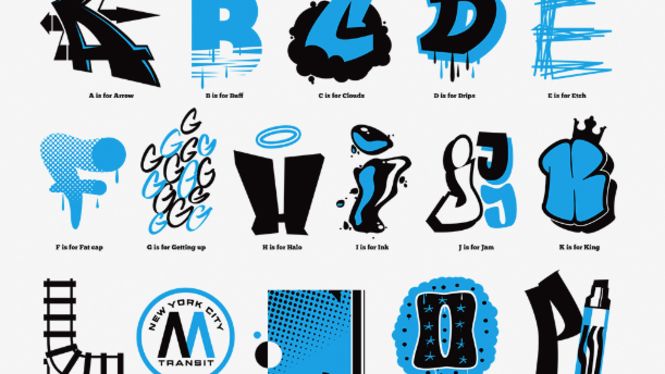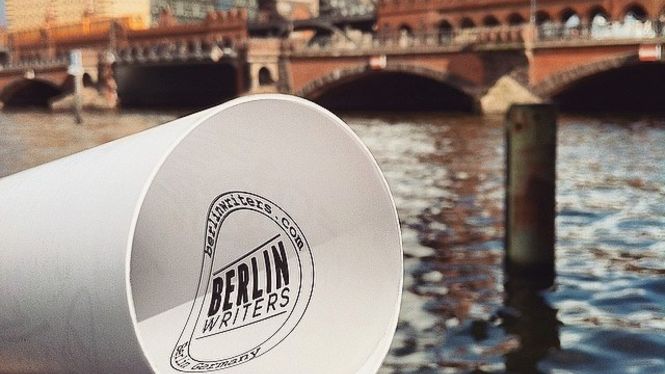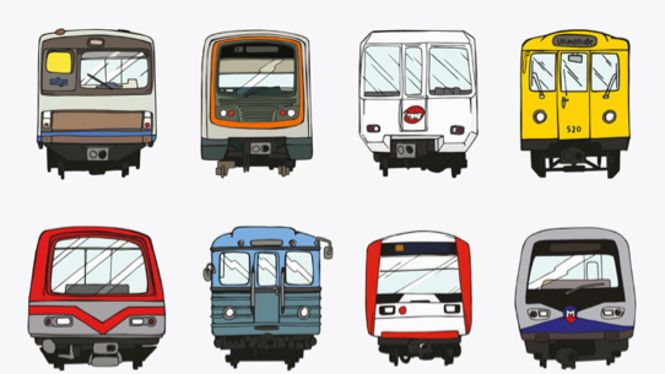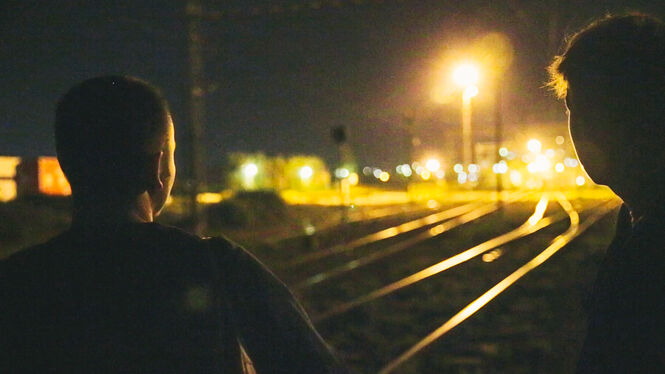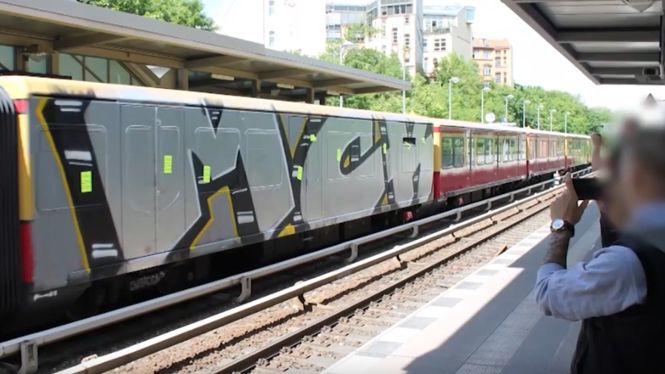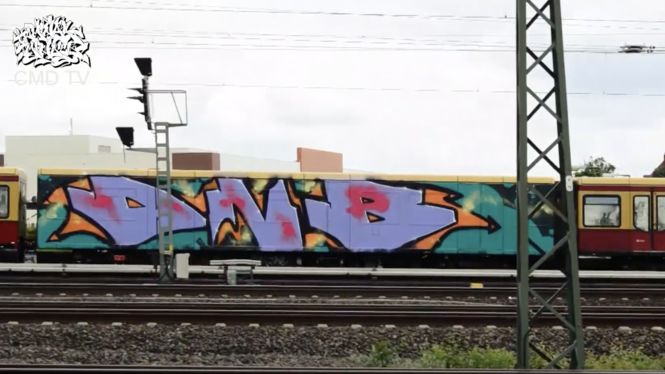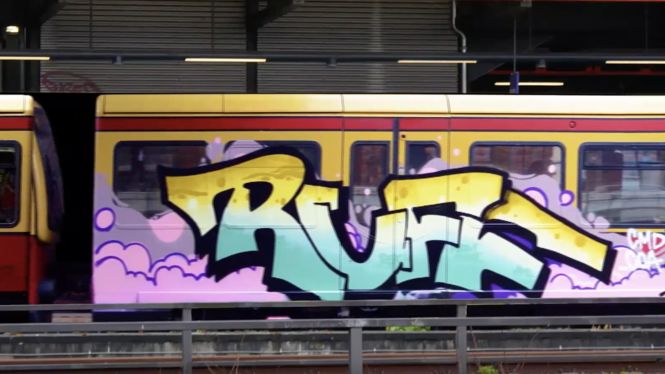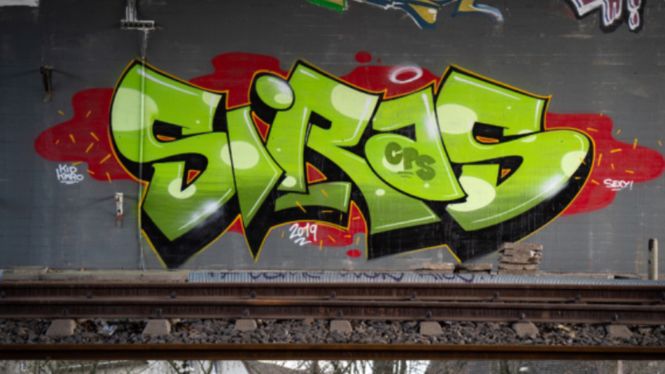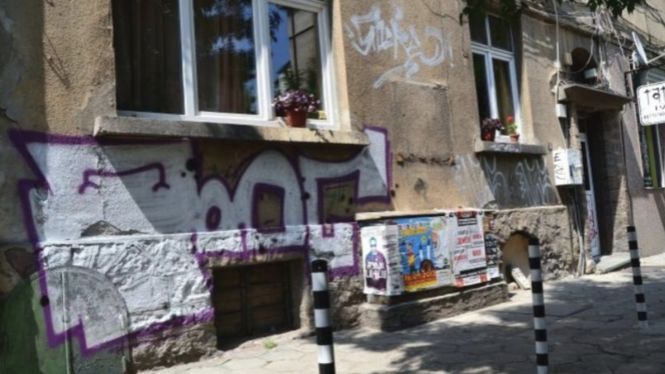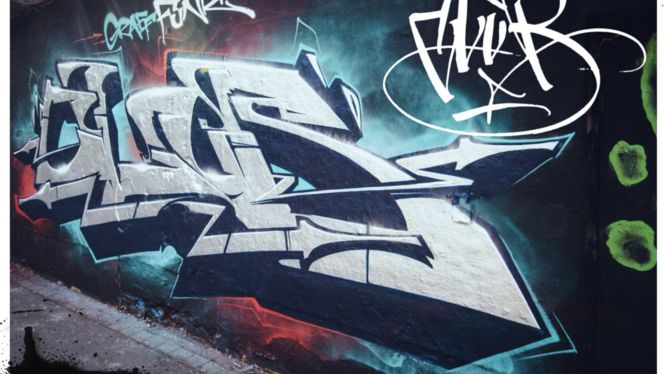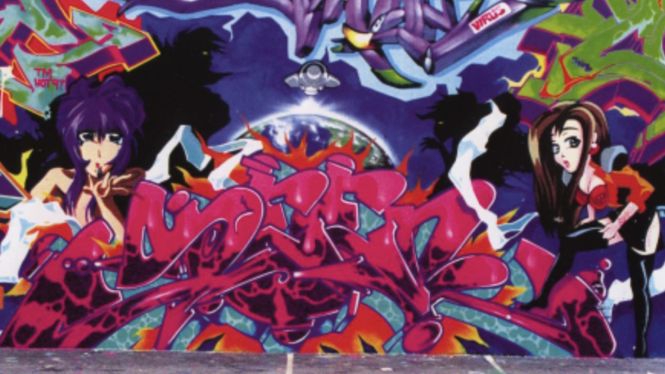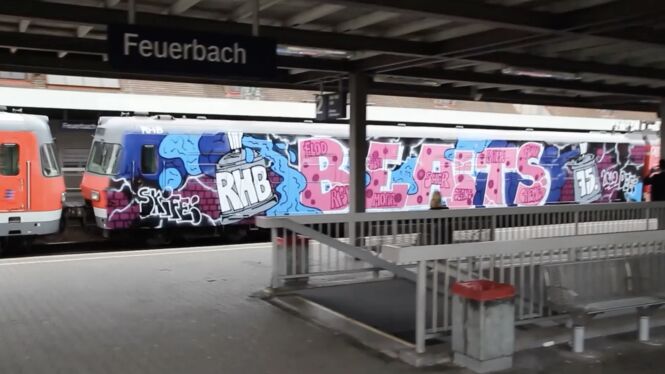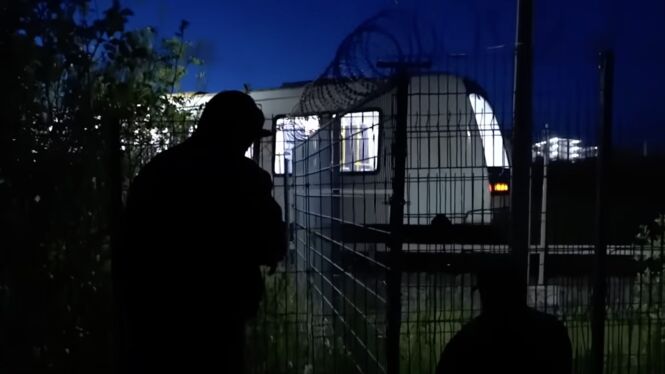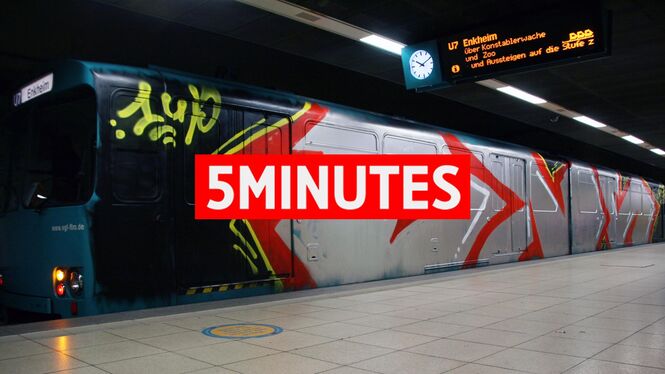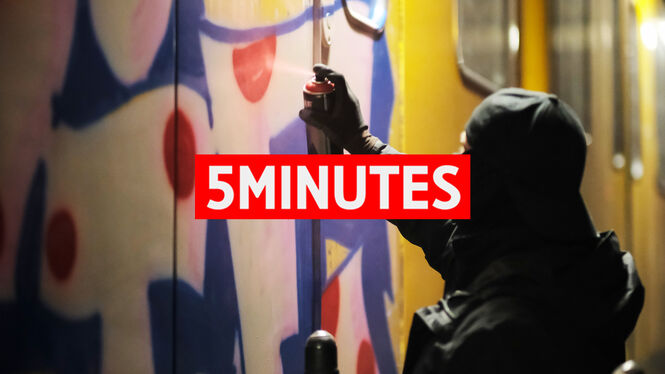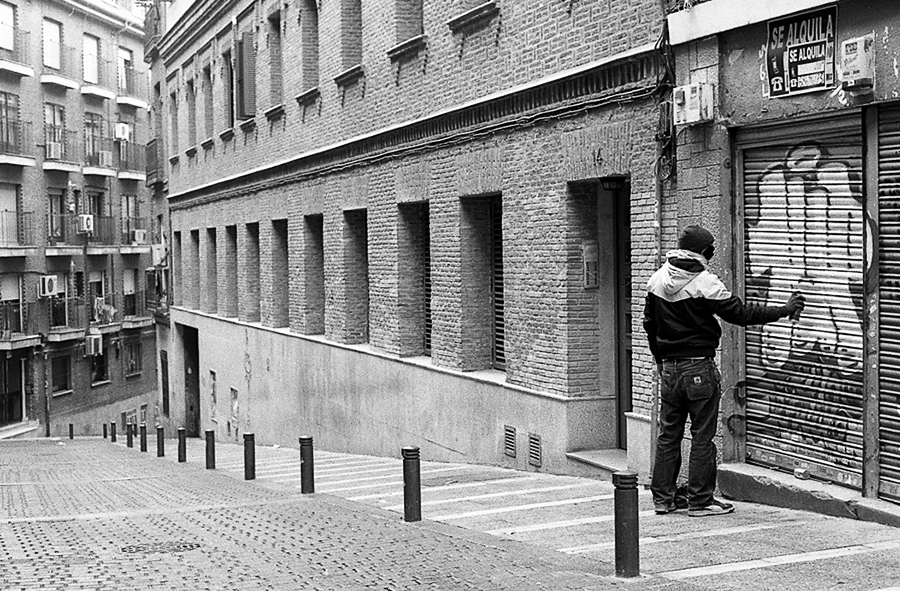
Seit 15.Dezember 2015 ist Thorfine´s erstes Buch “Noir et Blanc” erhältlich. Das 60seitige Buch ist ein Bildband analoger Fotos des französischen Fotografen, der mit Crews wie der 1UP,den VMD´s, der KSF oder PAL in einem Zeitraum von 7 Jahren in Madrid, New York, Miami, Istanbul, Paris, Berlin, Brüssel und Oslo unterwegs war und die Reisen mit der Kamera begleitet hat. Wir haben das Buch mal durchgeblättert und uns mit Thorfine über die Hintergründe und analoge Fotografie unterhalten.
Stell Dich unseren Lesern kurz vor, wo kommst Du her und wie bist Du zur Fotografie gekommen?
Mein Name ist Thorfine, ich komme aus den Pariser Suburbs. Ich habe mich schon im sehr jungen Alter für Fotografie interessiert, und meine ersten Versuche dann auch im Graffitibereich gemacht. Mit 12 Jahren war das, bin dann viel gereist und rumgekommen. In dieser Zeit habe ich noch meine eigenen Sachen fotografiert und dokumentiert, so wie es wohl jeder Graffitiwriter kennt.
Mit den Jahren kam dann das Interesse für mehr. Also nicht nur das Graffiti oder den Panel zu fotografieren, sondern mir Gedanken um das Drumherum zu machen, die Komposition des Fotos, in welchen Situationen und so weiter. Ich habe angefangen meine Fotos selbst zu entwickeln und über Wege und Konzepte nachzudenken, wie ich das, was ich und meine Freunde machen besser dokumentieren kann.
Ich habe angefangen für Magazine zu fotografieren, mich damit intensiv zu befassen. Bücher zum Thema lesen, Fotos von anderen betrachten, von Doisneau bis Dash Snow.
Mit welcher Kamera arbeitest Du heute?
Man weiss ja was dieser Graffiti Lifestyle so mit sich bringt: Rennen, Klettern, Fallen, die ganze Nacht unterwegs, Kälte, Regen, Schnee, Fights, Busts, Speicherkarten gehen verloren, man macht nicht immer Backups, wegen all dieser Dinge habe ich schon viele Kameras verloren. In dieser Zeit habe ich meist mit irgendwelchen schlechten Digital Kameras fotografiert.
Am Anfang dachte ich dann, eine billige Kamera die wie ein Marker oder irgendwas leicht und einfach mitzuführen ist, wäre eine gute Idee. Die kann auch mal kaputtgehen, und ist leicht zerstört wenns mal Probleme mit den Cops gibt. So bin ich zur Analog Fotografie gekommen, die haben zum Teil nur 10 Euro oder so gekostet. Dann aber hat mich die Magie der analogen Fotos immer mehr begeistert, keine Bildbearbeitung, keine Änderungen, so wie das Foto oder die Serie gemacht wird, bleibt es dann auch. Und im Gegensatz zur digitalen Fotografie hat man halt nur begrenzte Anzahl an möglichen Fotos, man muss also genau wissen wann man wo und wie abdrückt, sonst ist ruckzuck der Film voll. Je nach Format hat man ja nur 12, 24 oder 36 Versuche, und einen Burst Mode wie bei einer Digital Kamera hat man nicht. Eigentlich ähnliche Vorraussetzungen wie beim Graffiti malen.
Dein neues Buch “Noir et Blanc” widmet sich der Schwwarz/Weiß Fotografie. Warum hast Du Dich dafür entschieden?
Meine Grundlagen sind eigentlich narrative Aufnahmen mit Menschen. Graffiti und Street-Photography. Die Verwendung von Schwarz-Weiß-Fotos unterstützt diese Idee, so kann ich meine Bilder auf das Motiv und die Handlung konzentrieren, weniger auf die Ästhetik. Das Foto auf Graustufen zu reduzieren fördert eine abstraktere Darstellung, eine Sicht die dem Betrachter die Ablenkung von diversen Wahrnehmungen wie Farbe nimmt. Die Schwarz-Weiß-Fotografie vermittelt ungefiltert die Bildidee des Fotos, man kann selbst interpretieren, wird nicht abgelenkt von der Geschichte, die man darin lesen kann.
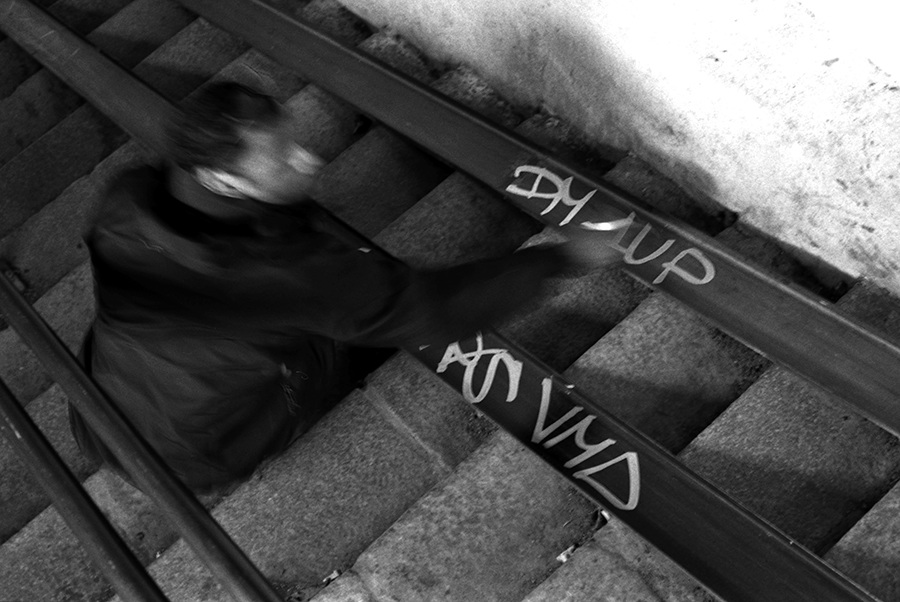
Nach welchen Kriterien fotografierst Du, also sind alle Fotos real und nicht gestellt?
Wie schon erwähnt, ich habe meine Kamera immer bei mir. Ich fotografiere alles was ich irgendwo sehe, alles was ich interessant finde halte ich fest, um ein gutes Foto zu machen. Mit einem guten Foto meine ich schöne Momente oder Situationen. Ich versuche durch die Linse genau das Bild zu bekommen, was ich mir vorstelle oder in meinem Kopf habe in diesem Moment. Eine Momentaufnahme eben. Ich will nichts stellen, es passiert immer spontan.
Was ist das Konzept des Buches und wie hast Du die Protagonisten ausgesucht, zufällig oder war alles Teil eines Konzepts?
Die Leute auf den Fotos sind meine Freunde und Familie. Die meisten sind aktive Graffitiwriter seit vielen Jahren. Es ist unser Leben, mein Leben. Ich möchte mit diesen Fotos versuchen, die Idee dahinter zu vermitteln, wie ein Leben als Graffitisprüher aussieht. Das Buch ist ein Mix aus Street-Photography und Graffiti Fotos, Parallelwelten die meine Vision des Straßenlebens hervorragend repräsentieren.
Wo ist das Buch erhältlich?
“Noir et Blanc” ist limitiert auf 200 Stück. Man kann es bei mir auf der Website kaufen, so lange bis alle weg sind.
On december 15th, french photographer and graffiti artist Thorfine published his book “Noir et Blanc” in a very limited amount of 200 pieces. 60 pages of unpublished film photography show special experience of the street and graffiti through the prism of the crews 1UP, VMD, KSF, PAL between Madrid, New York, Miami, Istanbul, Paris, Berlin, Bruxelles, Oslo…For 7 years Thorfine captured his environment on black and whites films, a choice linked to his practice and conception of graffiti. No editing, no change is possible, it is always to capture an instant, a moment by mastering a series of technical and external constraints.
We discussed a few things about the book and analog photography:
Please introduce yourself, where you from and how did you went into photography in general?
My surname is Thorfine, i come from Paris suburb.I liked street photography since i’m young but went into take my first flicks through graffiti; i start it 12 years ago, in my neighberhood than with the years and evolution i began to travel around the world to paint.At that point i manage to get a camera and start to take pictures of my stuffs, i guess a kind of usual way to come to photography as a writer.
With the years i was more and more focus on the photography, not only take pictures of the panel or the wall to have it somewhere but start an evolution about framing, composition, situations.I began to develop pictures by myself in a labor and think more and more about a concept of documenting what my friends and i are doing, how we do it.
I also start to work with photography for magazines and devellop myself as a photographer, studying this practice alone, reading books, checking a lot of different stuffs, from Doisneau to Dashsnow.
What camera or equipment do you use?
If you know what is graffiti lifestyle, you know what it means: running, climping, falling down, beeing out all night, cold, rain, snow, fights, get busted, lost a memory card hide somewhere and lot of picture you didn t backup etc…I broke cameras because all those good reasons and start step by step to think to change my equipment, at this time i was shooting with a shity digital camera.
In the beginning i wanted to have something i could always carry with me, as a marker, and broke without paying much attention, something i could just destroy and no police programm could get the pictures back as a proove against me or anyone else.That’s how i start to get cheap analog cameras for 10€.Then the real “magic” of analog appear to me.No editing, no change is possible, it is always to capture an instant, a moment by mastering a series of technical constraints and unlike digital photography, the number of exposures of a film is predetermined (12/24/36), which requires making choices (no preview of the photograph), to take some risks in a limited time (no burst mode).Numerous constraints similar to that i also find in my way of graffiti, vandalism and spontanious.
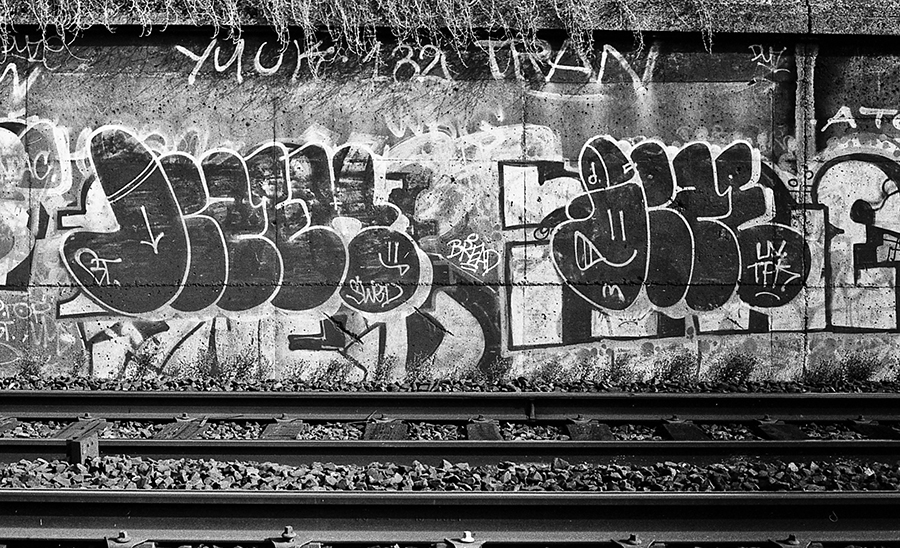
Your new book is focused on black and white photography. Why did you decided to go for black and white photos?
My fundamentals are based on narrative capture related to humans.Graffiti, street-photography.The use of black and white film supports this idea, allowing me to focus the intention of my images about the narrative side of it than esthetics. Reduce the image to grayscale promotes more abstract representation, this view allowing the viewer to not be distracted by some subconscious perceptions of colors.As a apectator, black and white show directly the idee of the photography, the direction of his representation for yourself, the story you could find in it.
On what criteries do you shoot, I mean is this all photographed caught in the act or sometimes you try to stunt shots here and there?
As i told you, i have always the camera with me.I shoot whatever i see wich is for me potentially a good pictures.By good picture i mean good moments, situations.I try to get through the lense this picture i create in my head of this situation, a representation from the instant.I don’t create the moment by organising a situation that i could take pictures from, as a shooting, it comes spontaniously.
Please xplain the concept of the book and the protagonists in the book, Graffiti artist are random choosed or part of the whole idea?
The people inside this book are my friends, my familly.Most of them active graffiti writers since years.It’s our life, my life.I show through those pictures our idea, our way of life through graffiti.The book is a mix of the street photography i use to do parallel to “graffiti” picture wich are toogether showing my global, personnal vision of the street.
Where is the book possible to buy in the near future?
“Noir et Blanc” is available on my website, you can still get it until the 200 copies are left!
Find the work of Thorfine on his website www.thorfine.com
“Noir et blanc” / 200 copies (limited edition) offset paper 120gr / 15 Euro
